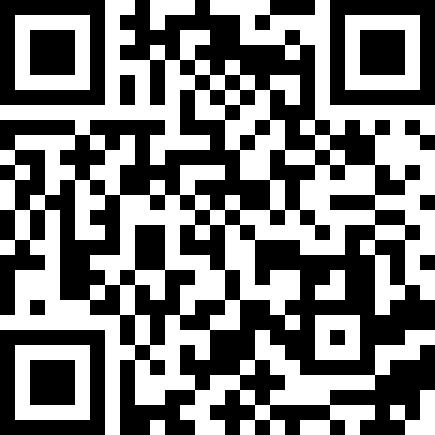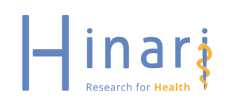Hemicorea de larga duración asociada a trastorno metabólico
Resumen
La corea asociada a la hiperglucemia representa un síndrome neurológico poco frecuente, mucho más común entre las mujeres asiáticas mayores. La fisiopatología sigue siendo controvertida y poco comprendida. Sin embargo, se han propuesto teorías como el aumento de la sensibilidad del receptor de dopamina, el infarto del núcleo estriado, el aumento del metabolismo del ácido gamma-aminobutírico y una alteración de la barrera hematoencefálica. Informamos que una mujer de 75 años de edad, de raza indígena, fue ingresada en el Departamento de emergencias debido a movimientos aleatorios, involuntarios y continuos severos en su brazo y pierna derecha que comenzaron 3 días antes, acompañados de síntomas osmóticos (polidipsia y poliuria). El nivel de glucosa capilar al ingreso fue 470,5 mg/dL, sin rastros de cetona en sangre u orina, mientras que el valor de hemoglobina glicosilada fue 15,4%. La resonancia magnética nuclear reportó hiperintensidad en T1 del núcleo lenticular izquierdo predominantemente a nivel del putamen sin otras alteraciones. Describimos los aspectos de la larga duración de los síntomas a pesar del tratamiento y el control metabólico adecuado.
Citas
2. Bizet J, Cooper CJ, Quansah R, Rodriguez E, Teleb M, Hernandez GT. Chorea, Hyperglycemia, Basal Ganglia Syndrome (C-H-BG) in an uncontrolled diabetic patient with normal glucose levels on presentation. Am J Case Rep. 2014;15:143–6.
3. Ryan C, Ahlskog JE, Savica R. Hyperglycemic chorea/ballism ascertained over 15 years at a referral medical center. Parkinsonism Relat Disord. 2018; 48:97–100.
4. Dewey RB Jr, Jankovic J. Hemiballism-hemichorea. Clinical and Pharmacologic findings in 21 patients. Arch Neurol. 1989; 46(8):862–7.
5. Lee P, Kek P, Soh A. Hyperglycemia-associated Hemichorea-hemiballism: The spectrum of clinical presentation. Intern Med. 2015;54(15):1881–4.
6. Madu E, Alam H. Chorea, hyperglycemia, basal ganglia syndrome. J Am Osteopath Assoc. 2015;115(7):465.
7. Lucassen EB, Delfyett WT, Stahl MC. Persistent hemichorea and caudate atrophy in untreated diabetic striatopathy: A case report. Case Rep Neurol. 2017; 9(3):299–303.
8. Al-Quliti KW, Assaedi ES. Hemichorea with unilateral MRI striatal hyperintensity in a Saudi patient with diabetes. Neurosciences (Riyadh). 2016;21(1):56–9.
9. Newman RP, Kinkel WR. Paroxysmal choreoathetosis due to hypoglycemia. Arch Neurol. 1984; 41(3):341–2.
10. Boychuk CR, Halmos KC, Smith BN. Diabetes induces GABA receptor plasticity in murine vagal motor neurons. J Neurophysiol. 2015; 114(1):698–706.
11. Aragonès JM, Blanch C, Corominas G, Alonso-Valdés F, Alfonso S. [Paroxysmal dyskinesia secondary to non-ketotic hyperglycaemia with a diabetic onset]. Rev Neurol. 2014; 58(6):286–7.
12. Chu K, Kang DW, Kim DE, Park SH, Roh JK. Diffusion-weighted and gradient echo magnetic resonance findings of hemichorea-hemiballismus associated with diabetic hyperglycemia: a hyperviscosity syndrome? Arch Neurol. 2002; 59(3):448–52.
13. Yokoi K, Kazuta T, Torii R, Endo T, Araki A, Terao S. Effectiveness of levodopa treatment for diabetic chorea with reduced striatal accumulation in dopamine transporter SPECT: a case report. Rinsho Shinkeigaku. 2017; 57(10):591–4.
14. Gómez Ochoa SA, Espín Chico BB. Understanding the pathophysiology of hyperglycemia-associated chorea-ballism: a systematic review of positron emission tomography findings. Funct Neurol. 2018;33(2):67–72.
15. Gómez-Ochoa SA, Espín-Chico BB, Pinilla-Monsalve GD, Kaas BM, Téllez-Mosquera LE. Clinical and neuroimaging spectrum of hyperglycemia-associated chorea-ballism: systematic review and exploratory analysis of case reports. Funct Neurol. 2018; 33(4):175–87.
16. Chen C, Zheng H, Yang L, Hu Z. Chorea-ballism associated with ketotic hyperglycemia. Neurol Sci. 2014; 35(12):1851–5.
17. Roze E, Saudou F, Caboche J. Pathophysiology of huntington’s disease: From huntingtin functions to potential treatments. Curr Opin Neurol. 2008; 21(4):497-503.
18. Oh SH, Lee KY, Im JH, Lee MS. Chorea associated with non-ketotic hyperglycemia and hyperintensity basal ganglia lesion on T1-weighted brain MRI study: a meta-analysis of 53 cases including four present cases. J Neurol Sci. 2002; 200(1–2):57–62.
19. Rodriguez-Castro KI, Hevia-Urrutia FJ, Sturniolo GC. Wilson’s disease: A review of what we have learned. World J Hepatol. 2015; 7(29):2859–70.
20. Dean SL, Singer HS. Treatment of sydenham’s chorea: A review of the current evidence. Tremor Other Hyperkinet Mov (NY). 2017; 7: 456.

















